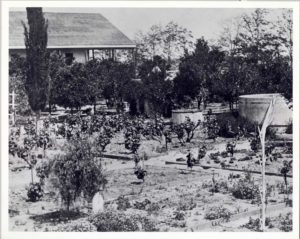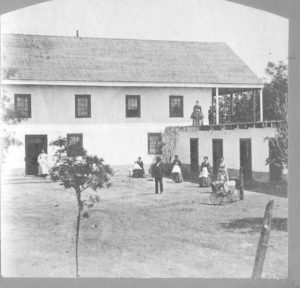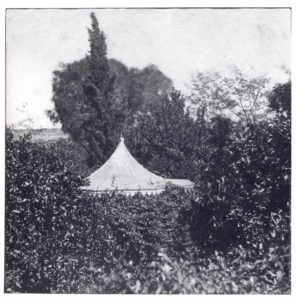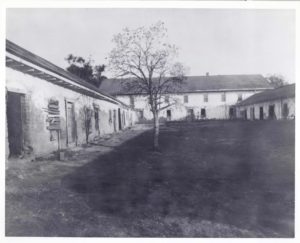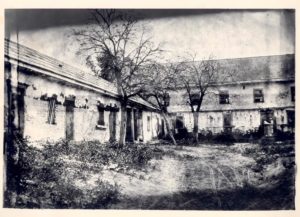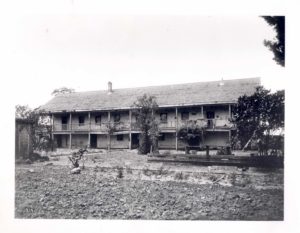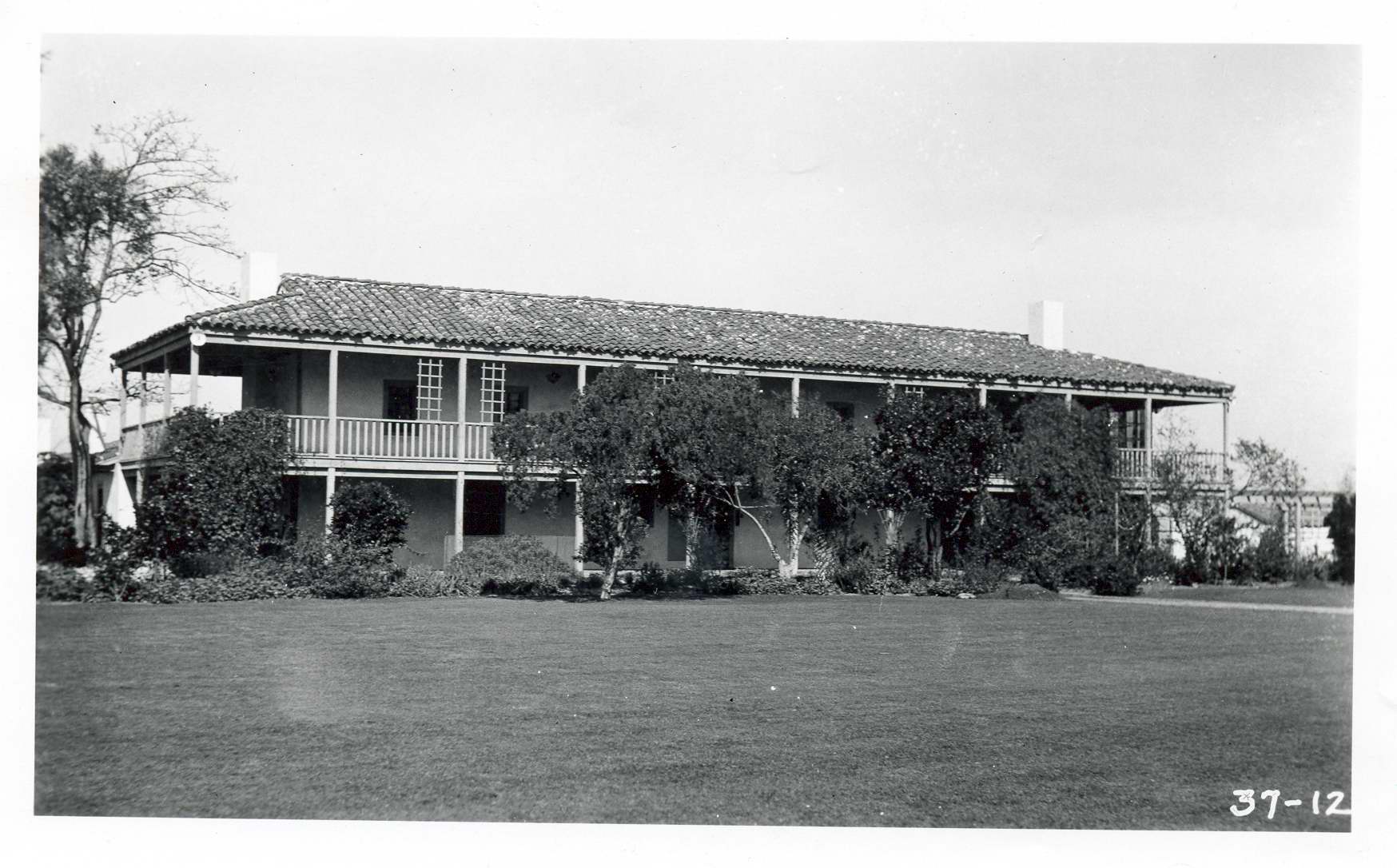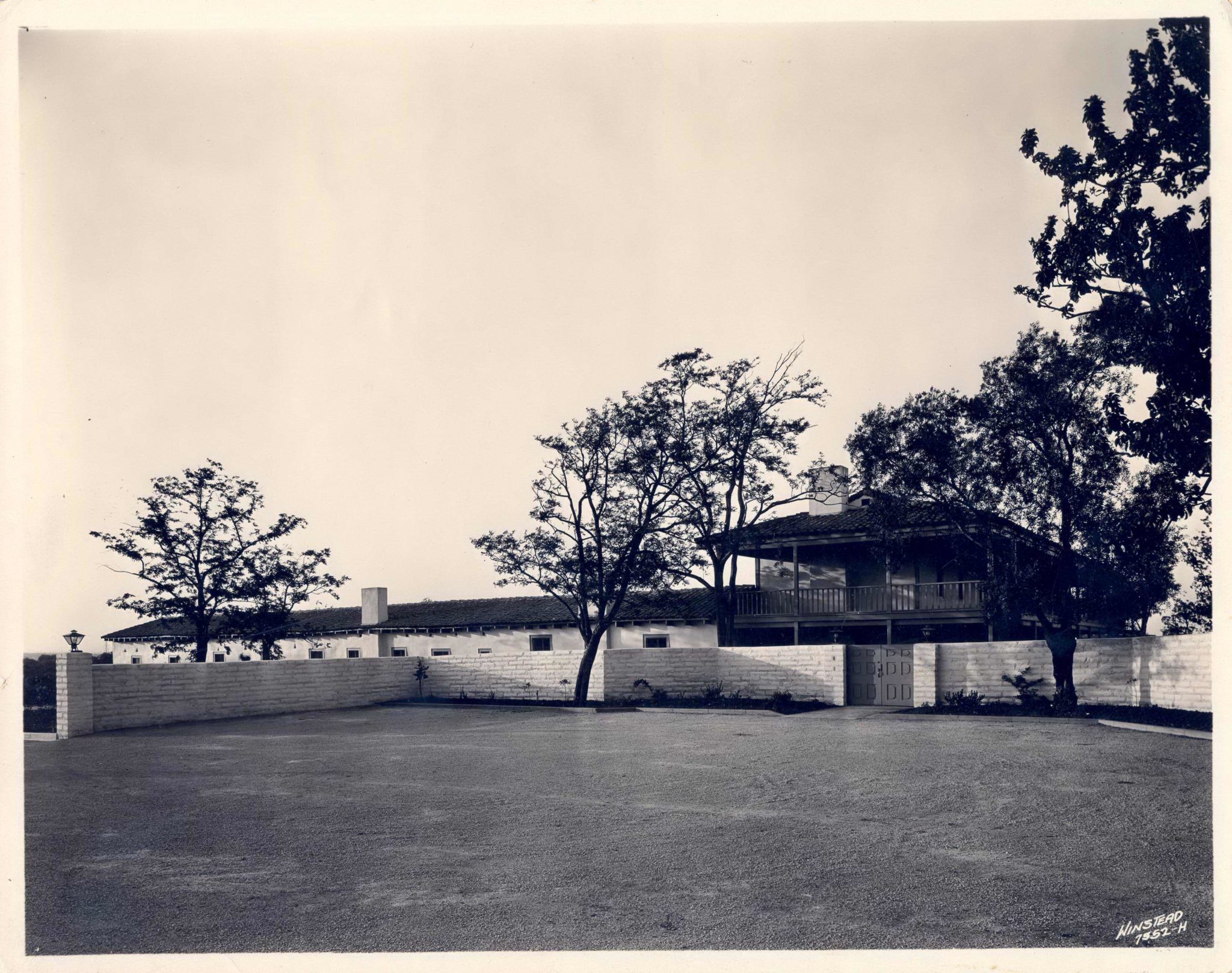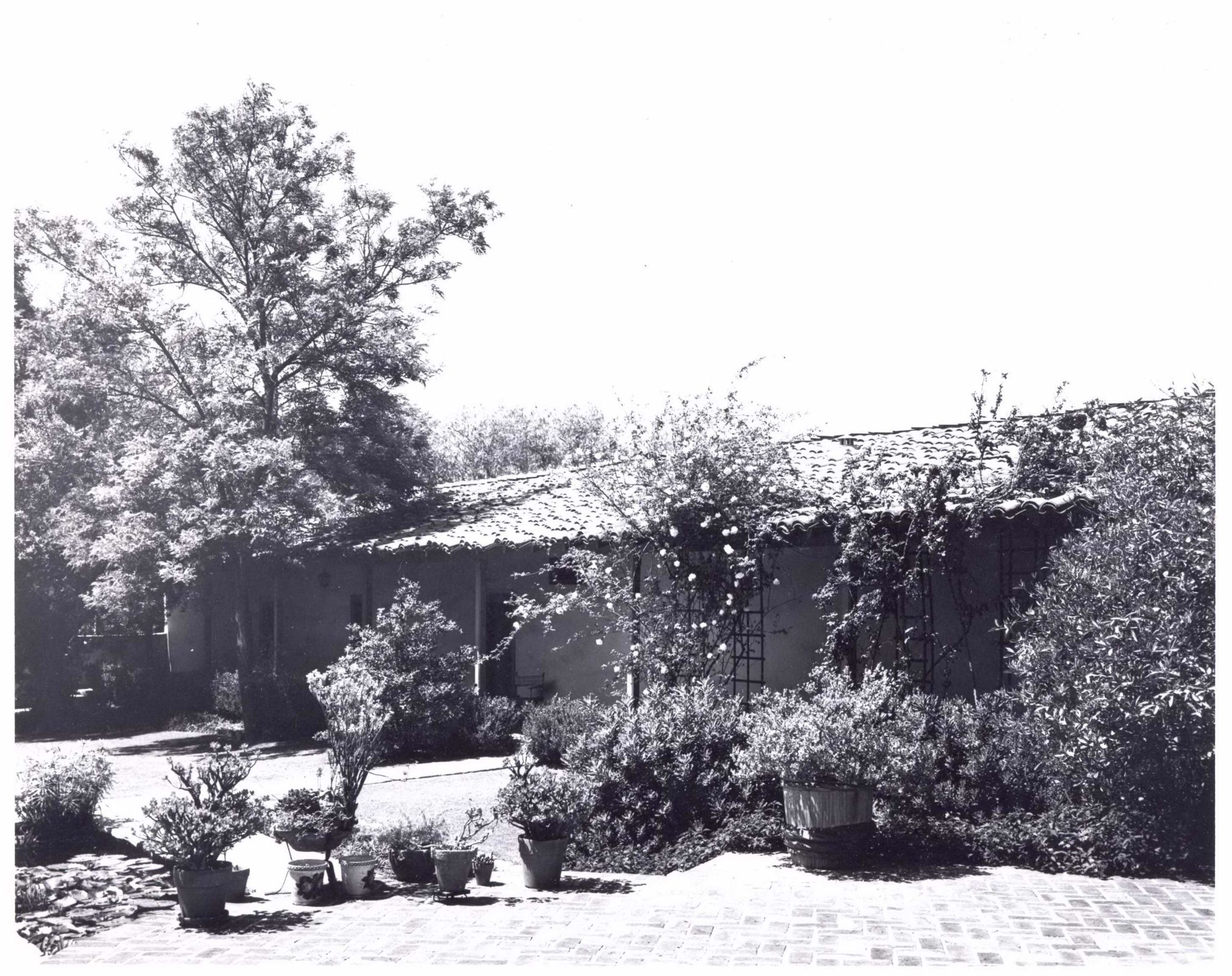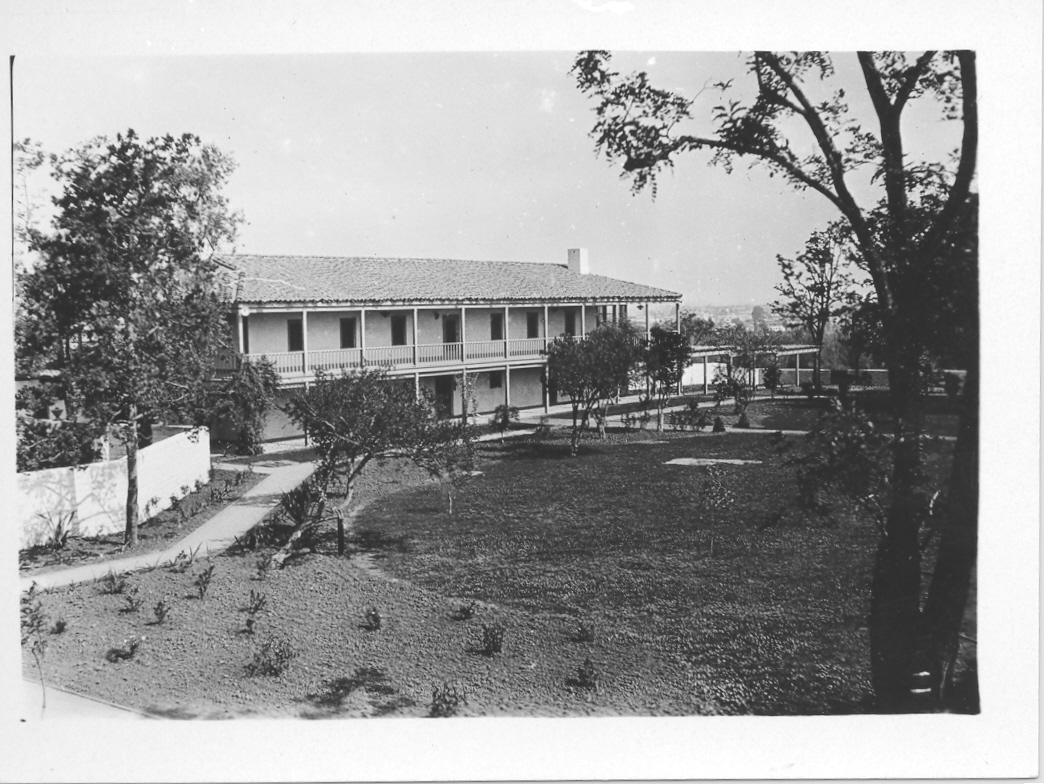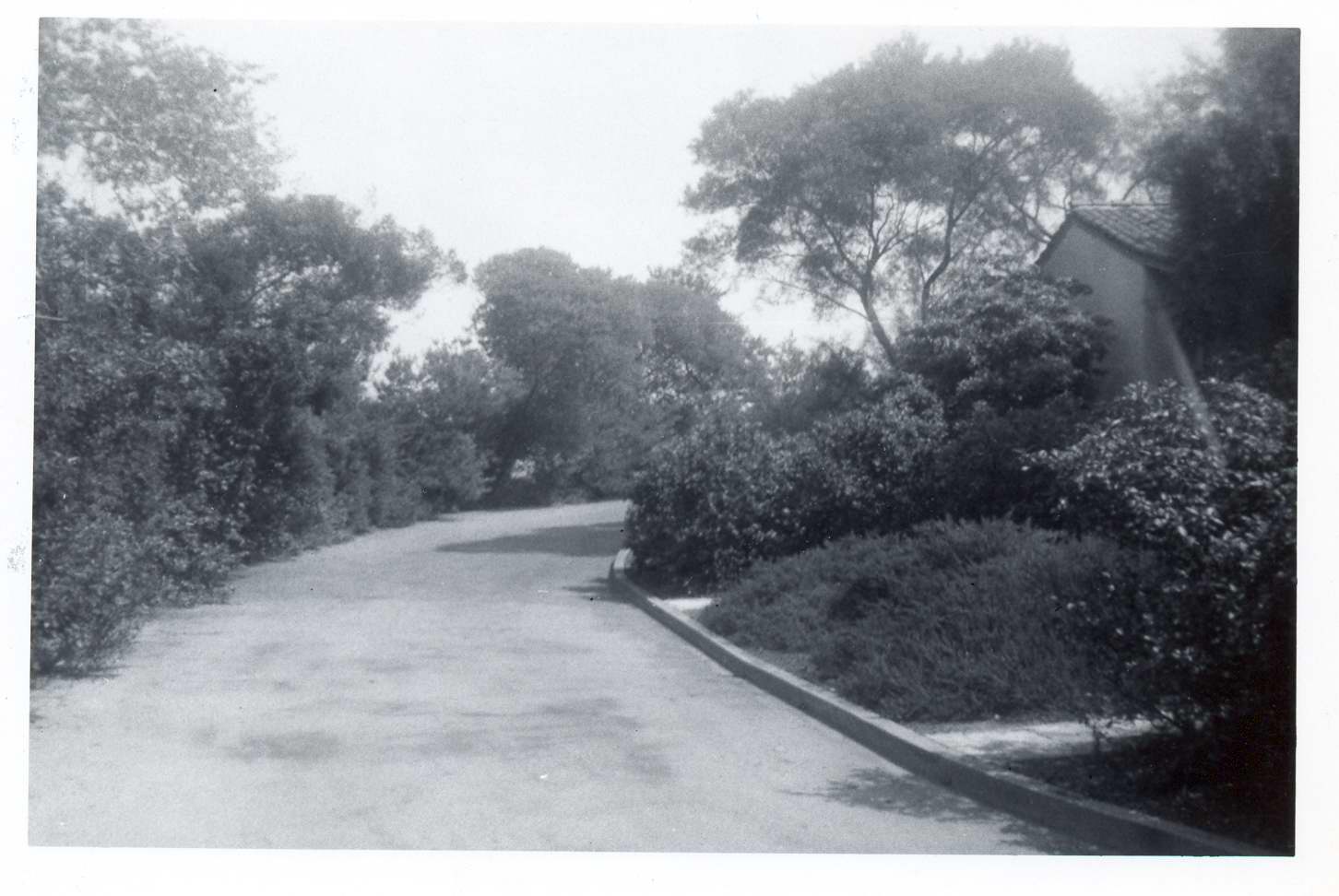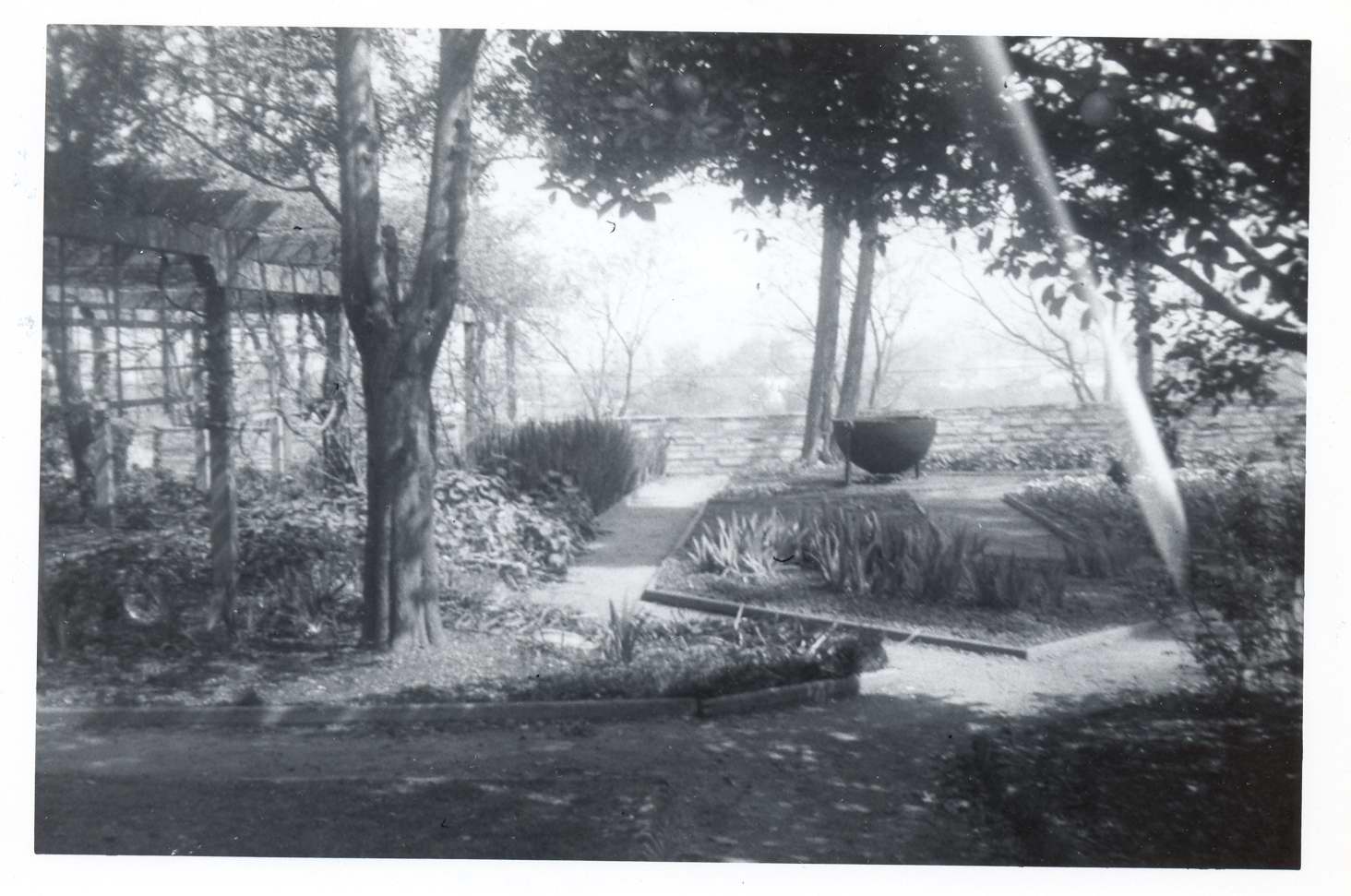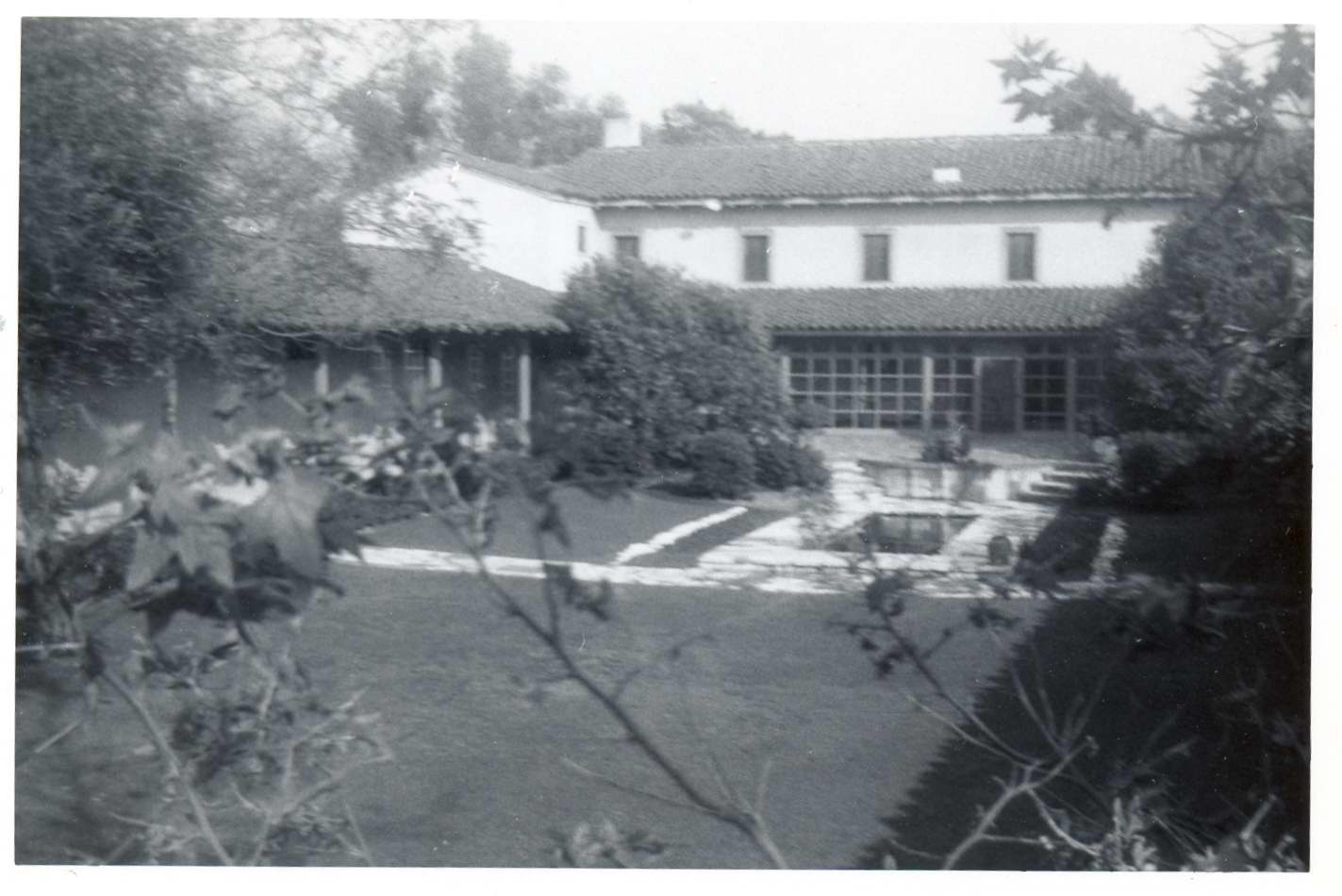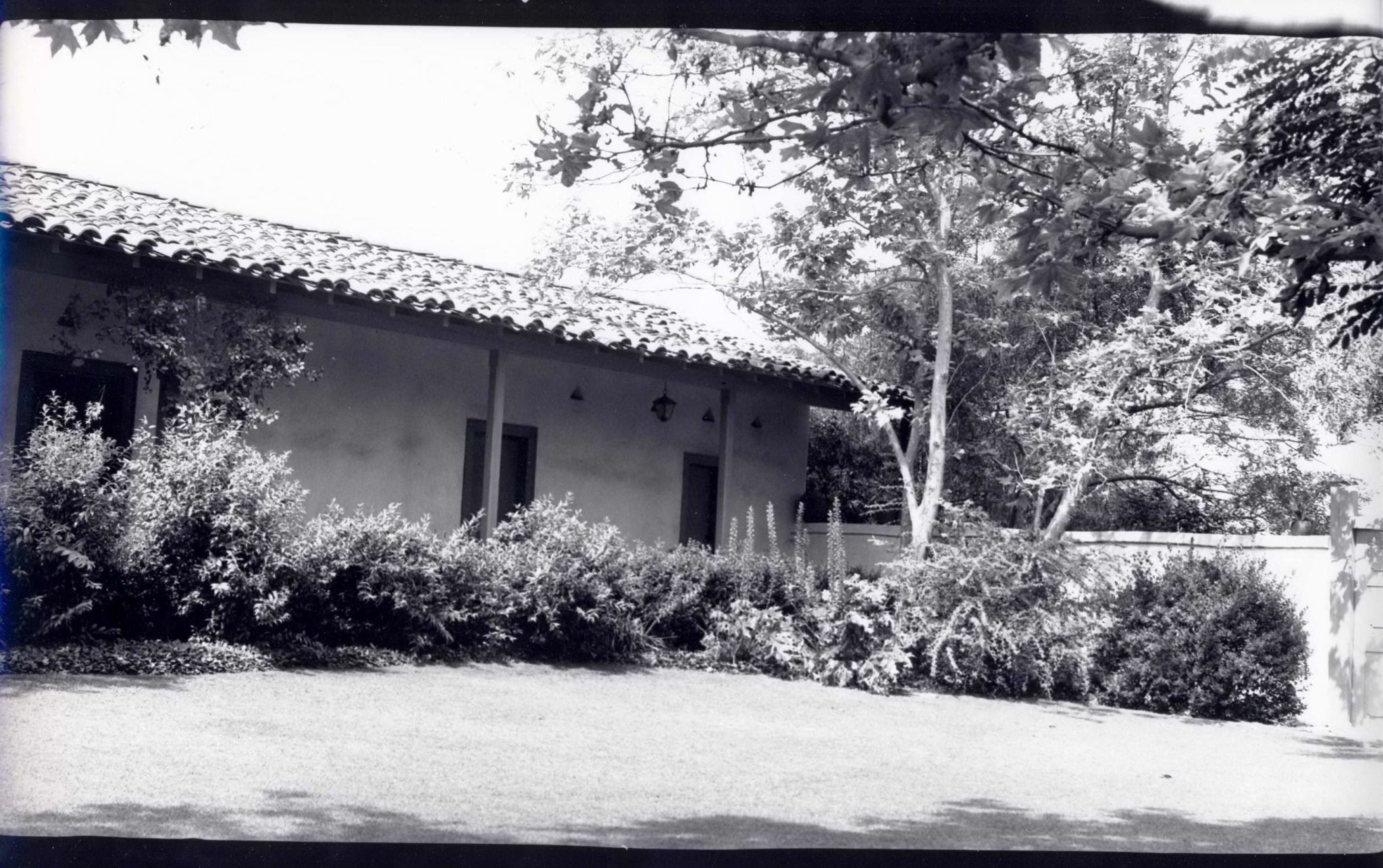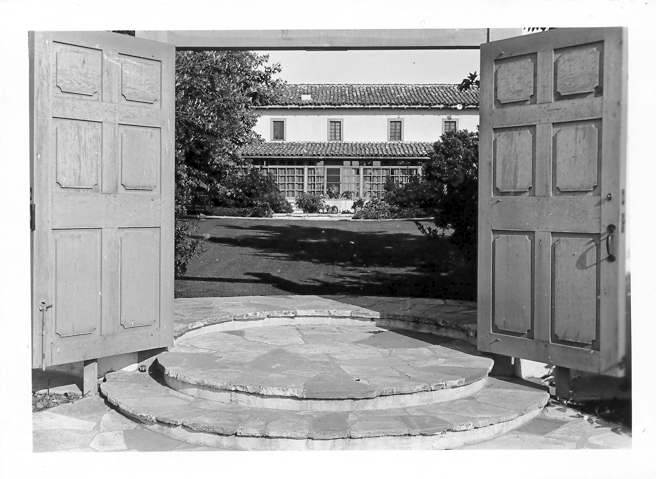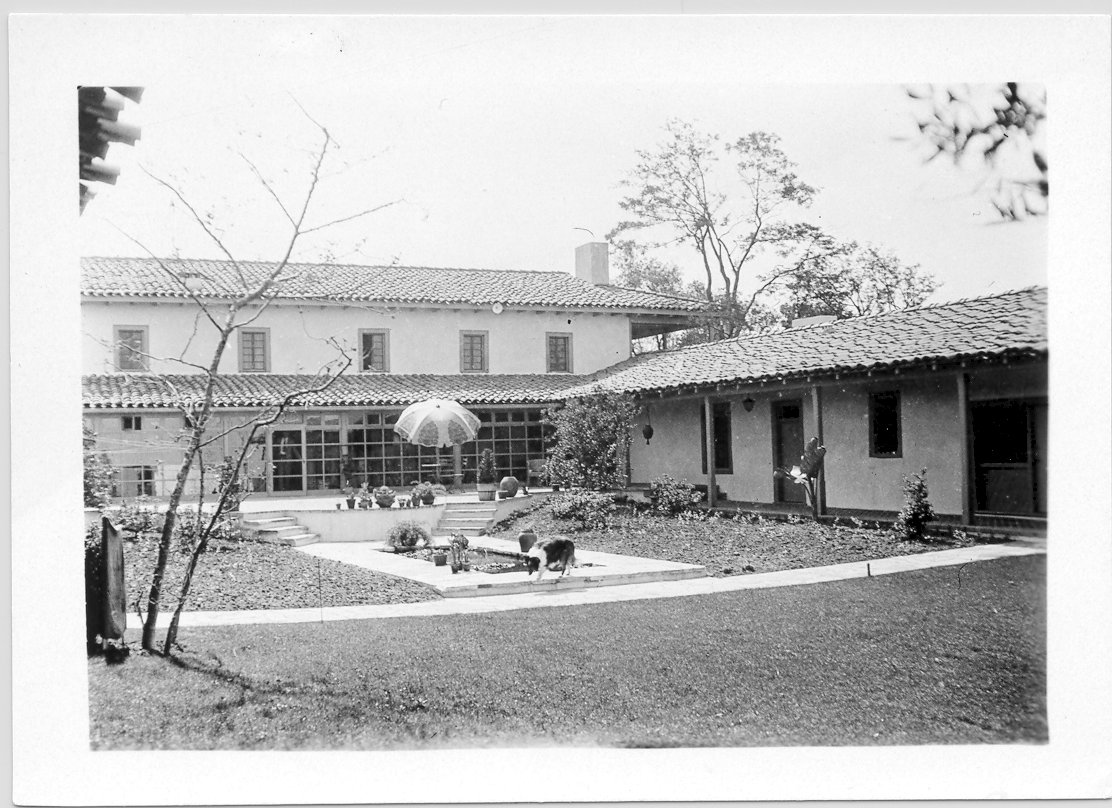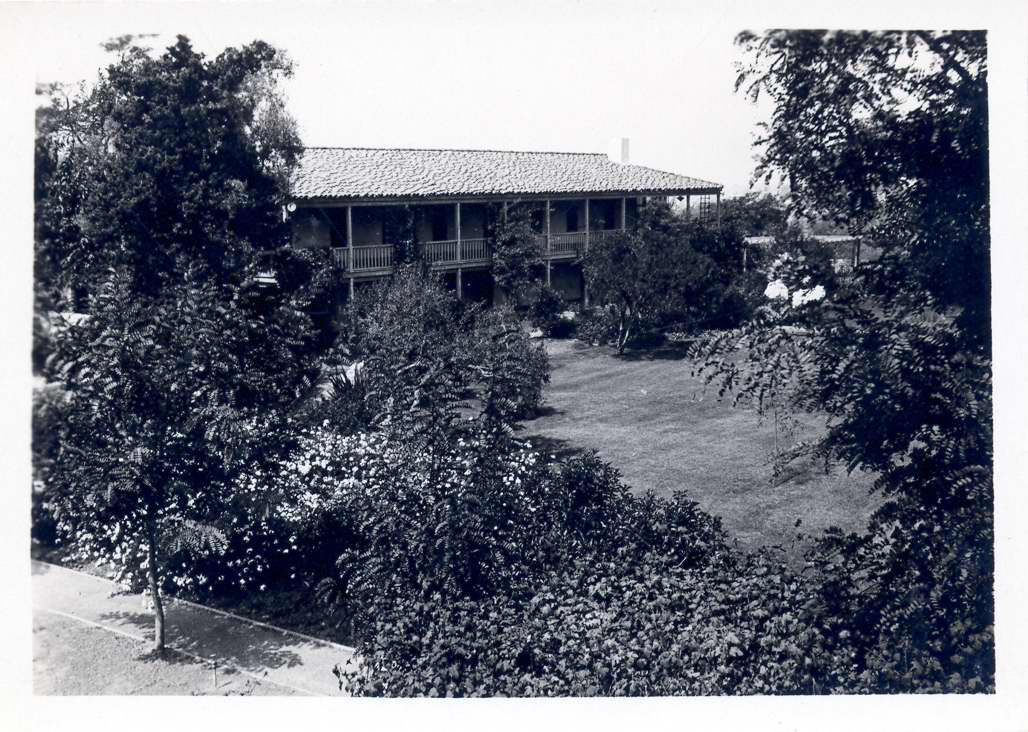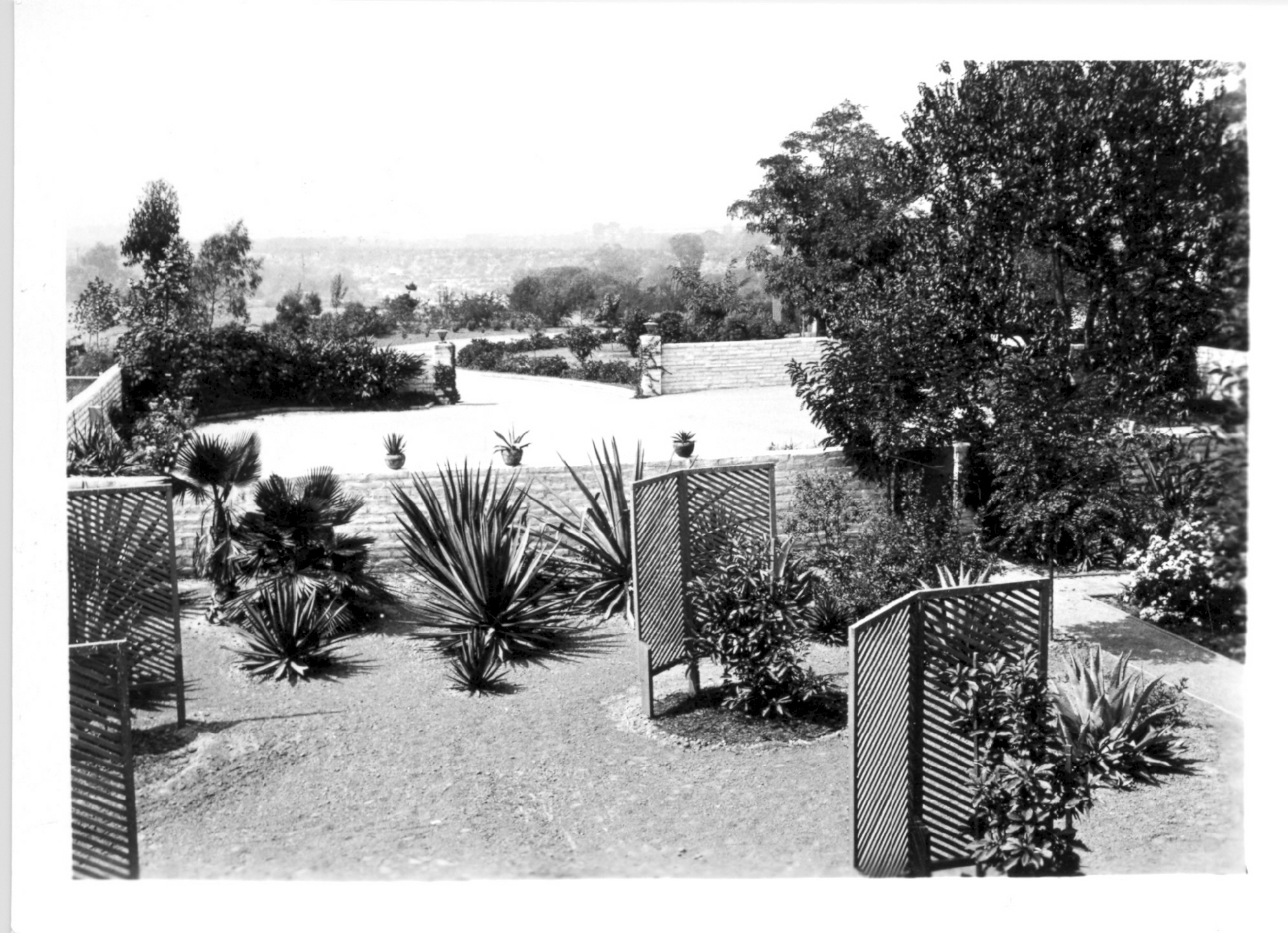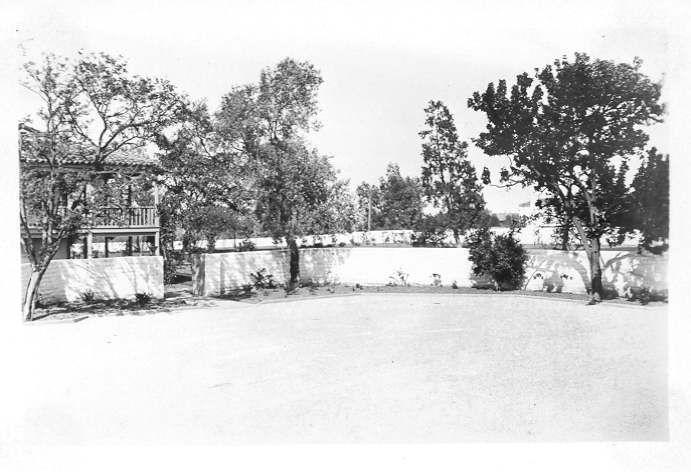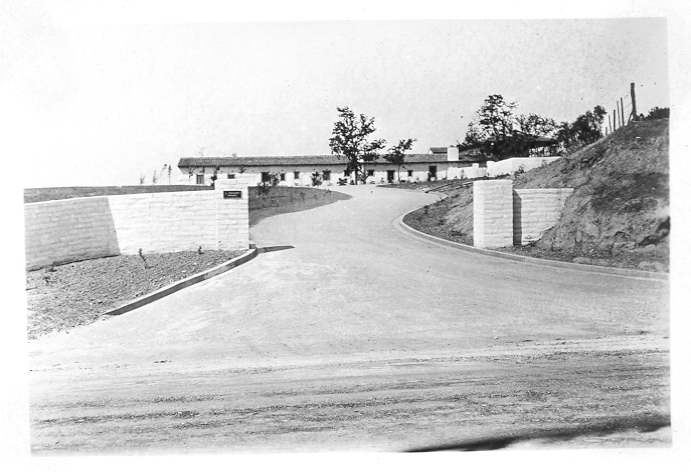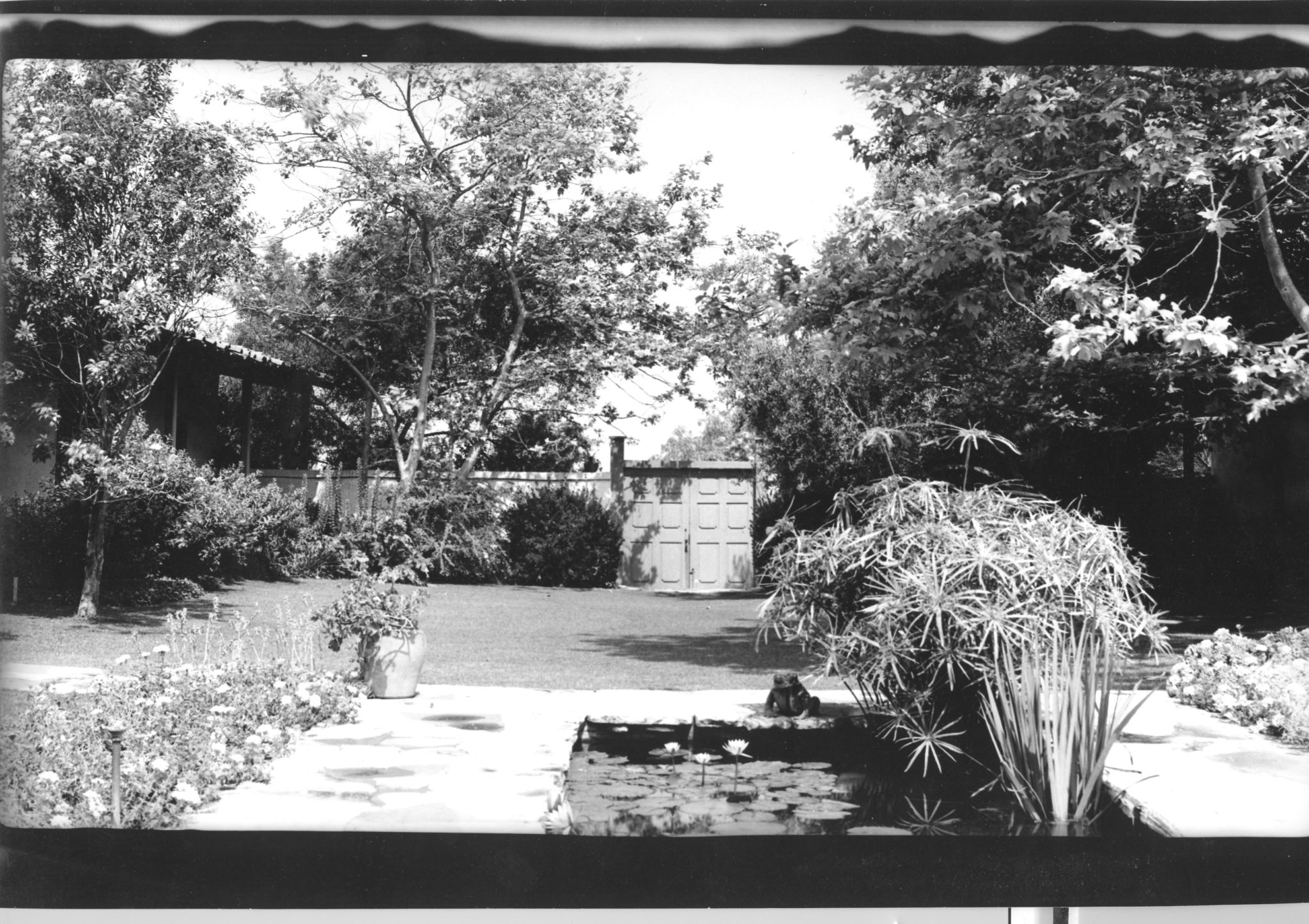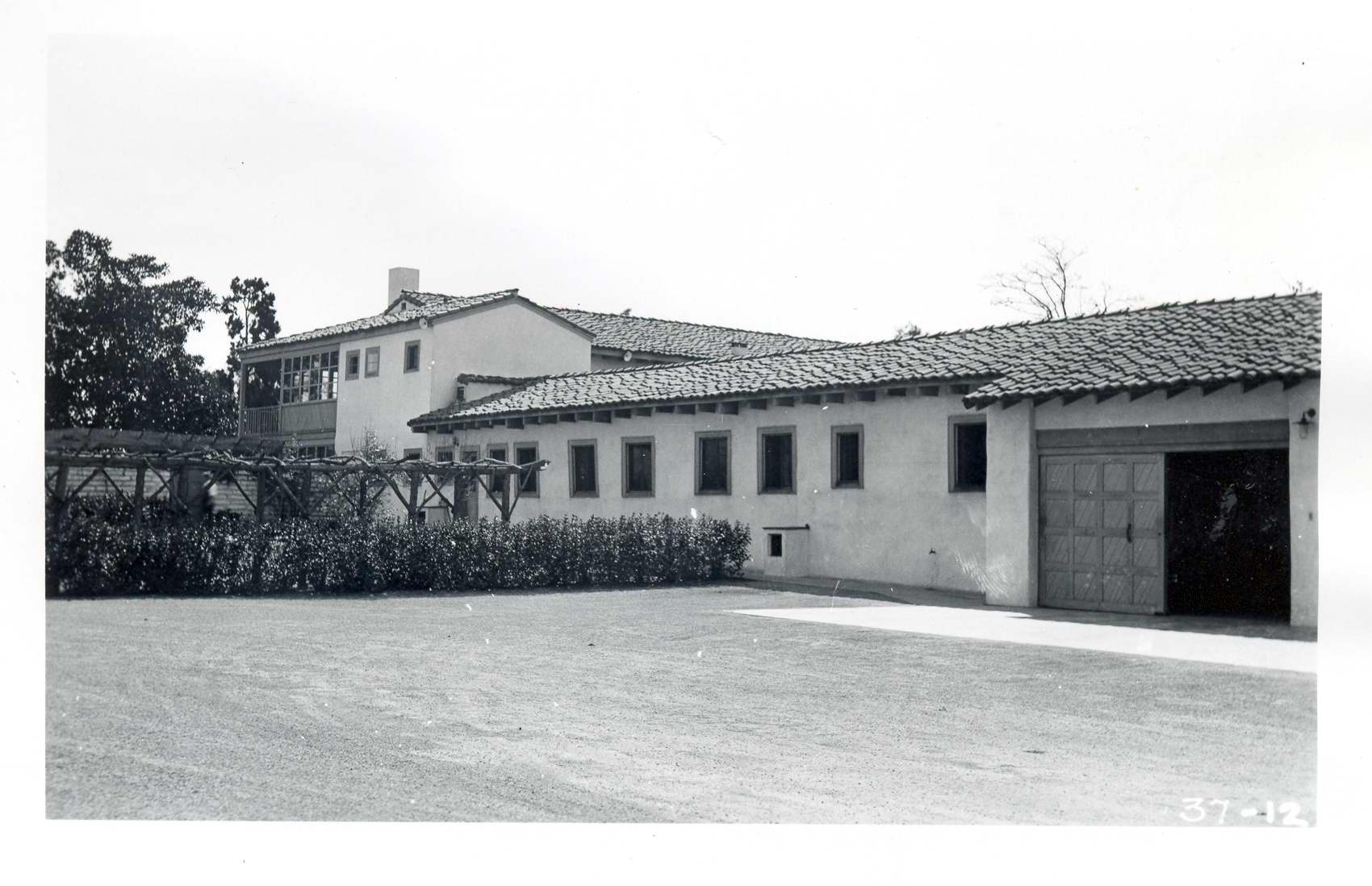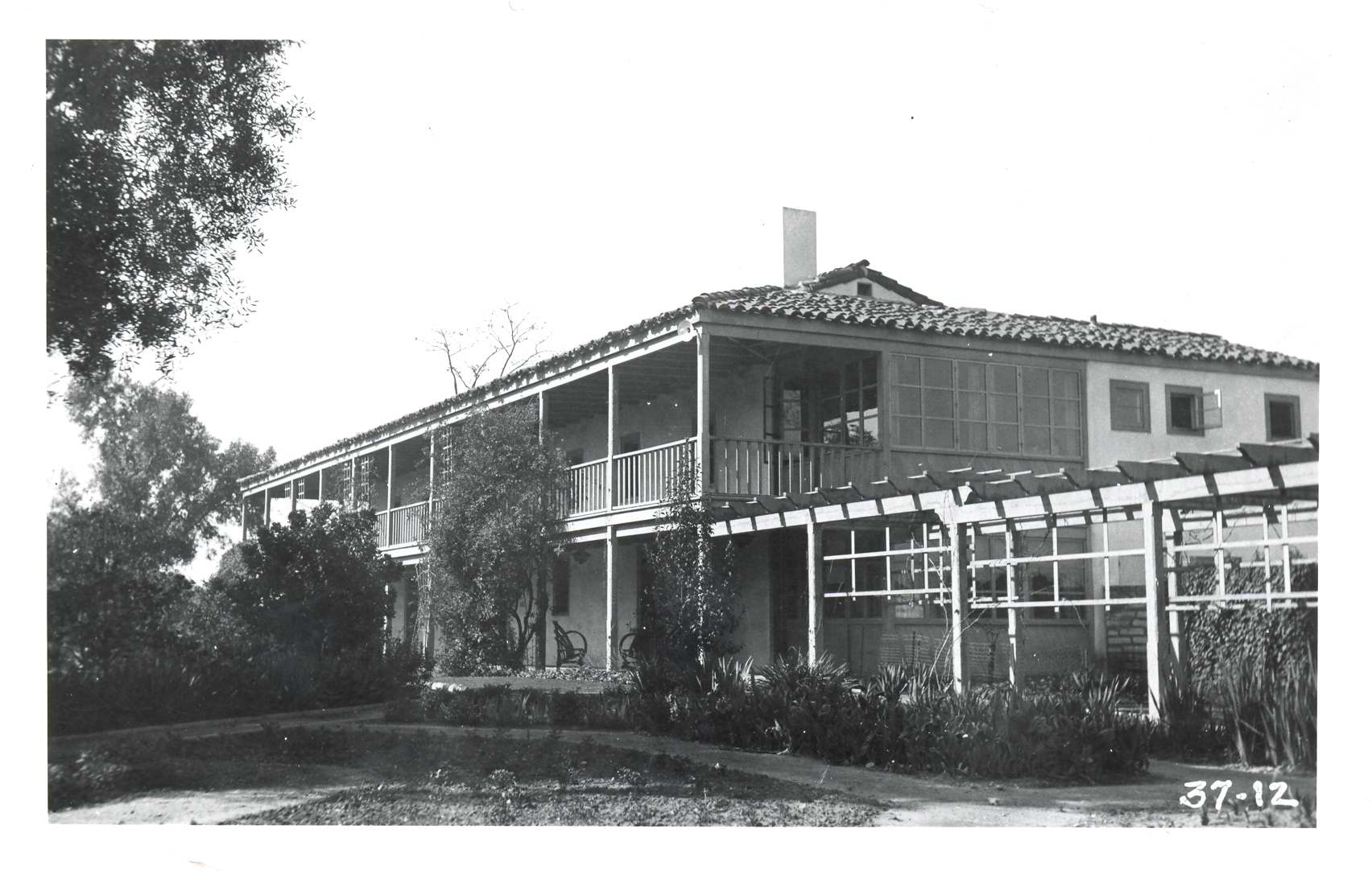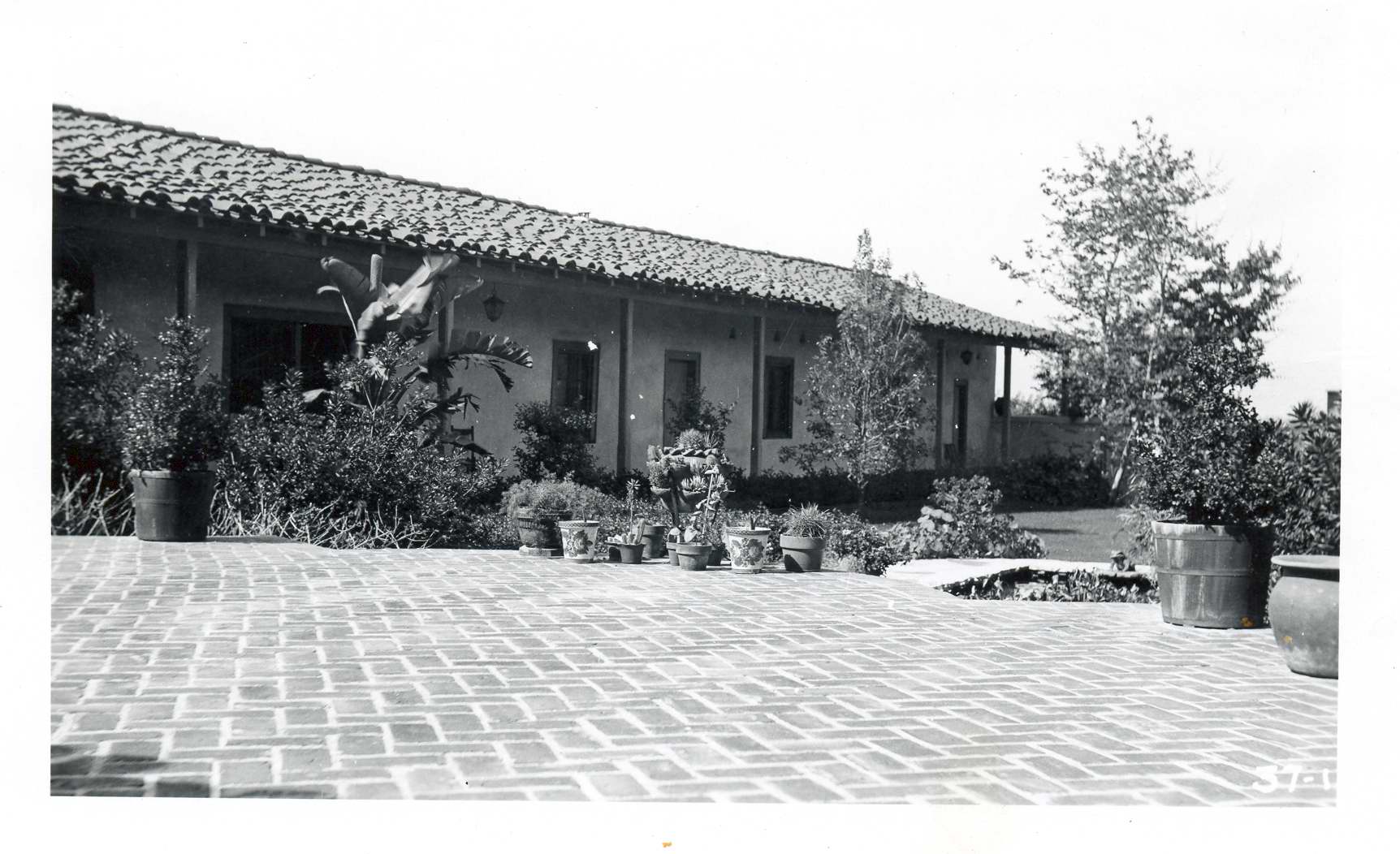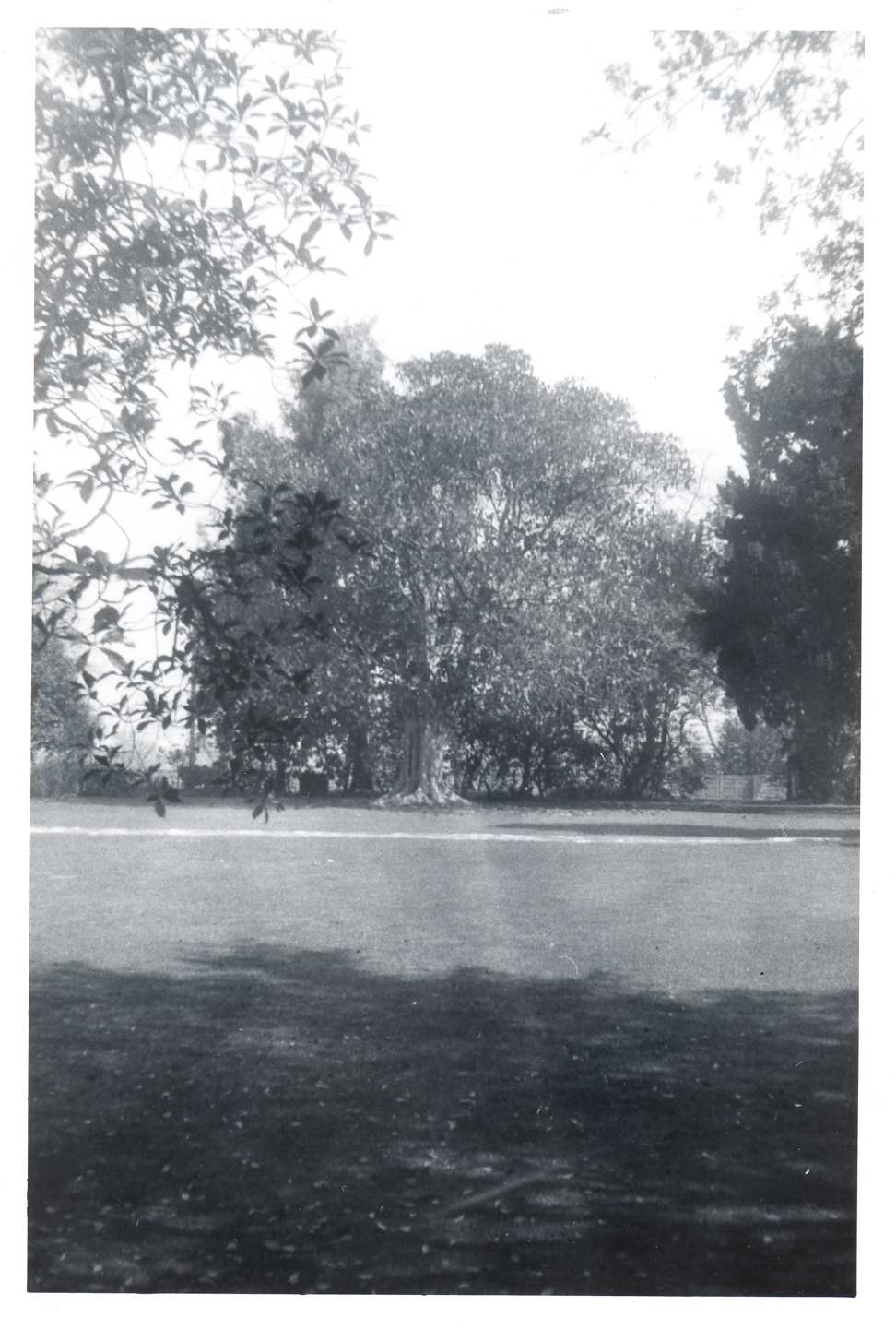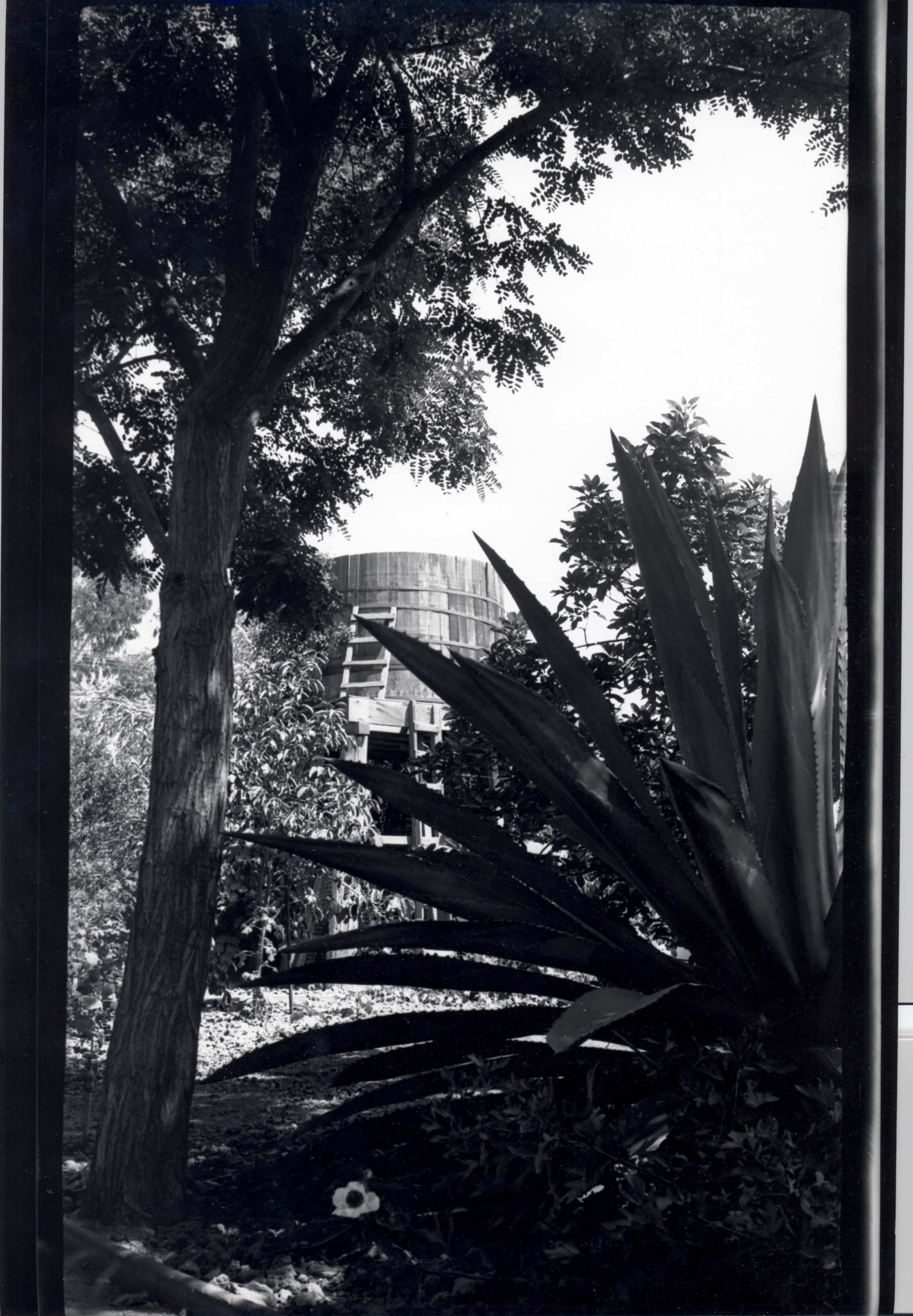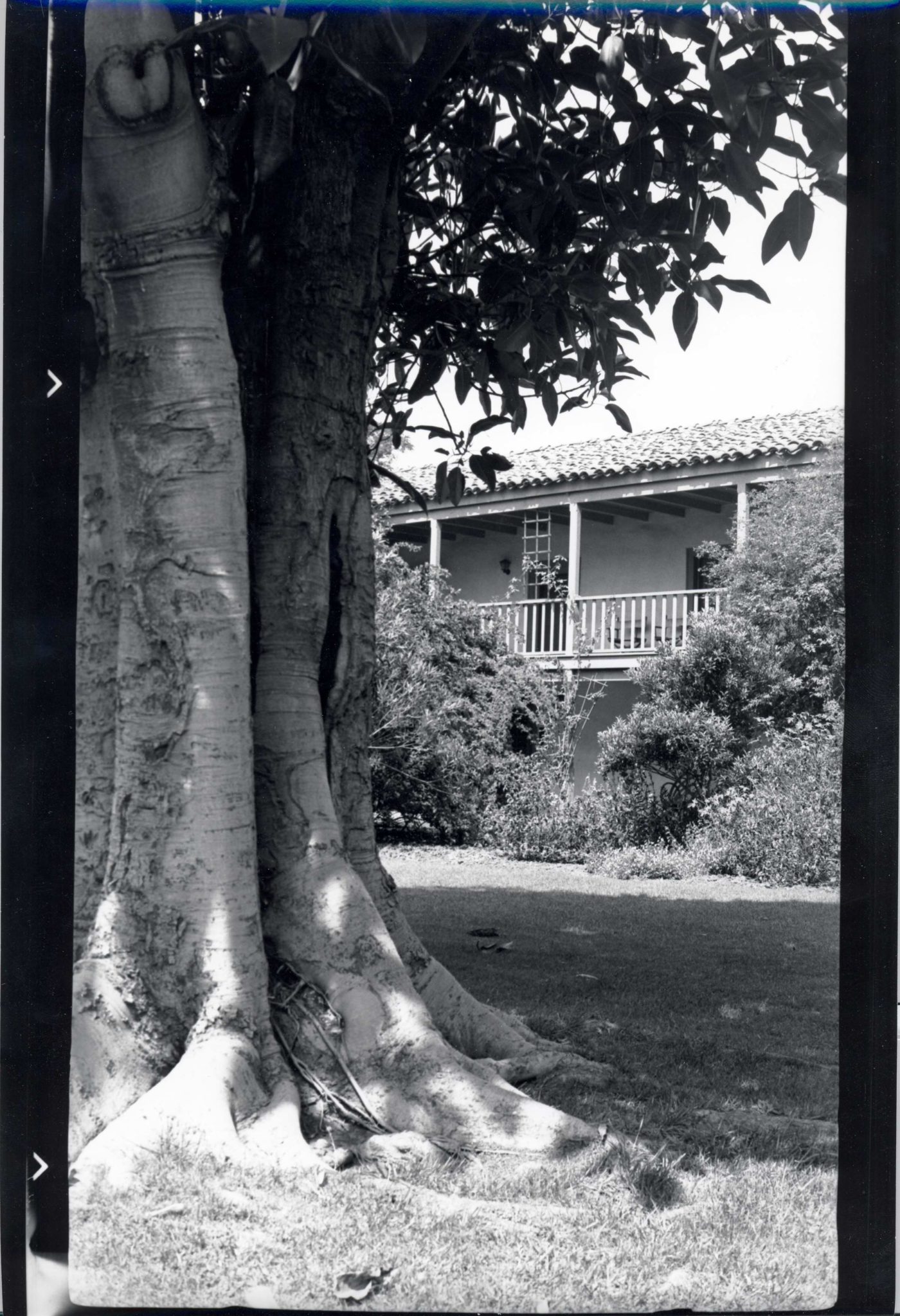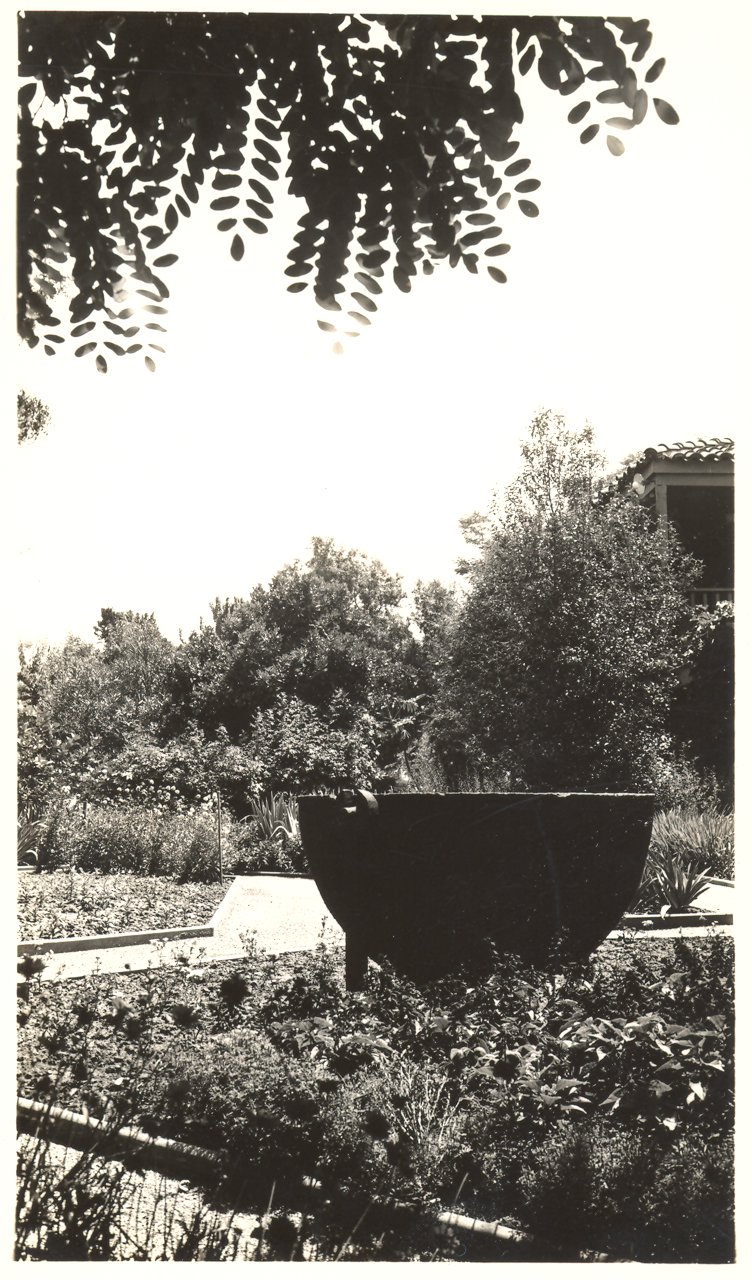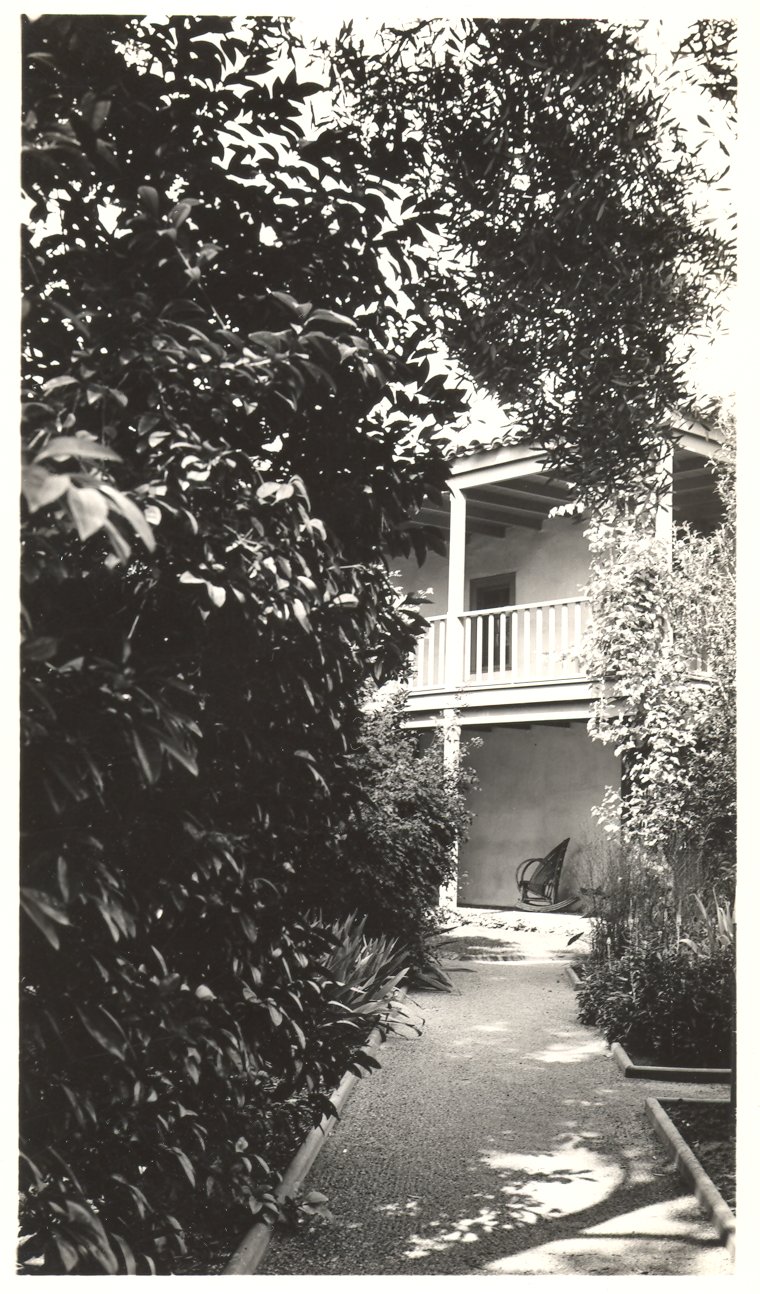Temple’s Garden: 1840s –1866
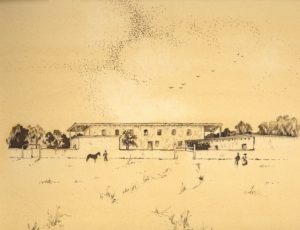 John Temple lived in Los Angeles, but had the Monterey Colonial adobe built at his cattle ranch in the 1840s. Behind the house he added a two-acre colonial-style garden like those popular during his youth in Massachusetts. California’s climate enabled him to incorporate plants that would never have withstood the hard freezes of a New England winter.
John Temple lived in Los Angeles, but had the Monterey Colonial adobe built at his cattle ranch in the 1840s. Behind the house he added a two-acre colonial-style garden like those popular during his youth in Massachusetts. California’s climate enabled him to incorporate plants that would never have withstood the hard freezes of a New England winter.
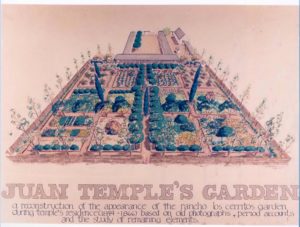 An alee lined with the subtropical orange trees led from the central back door to the Moorish style summer house, which served as the focal point amidst the raised garden beds. These beds were planted with fruit trees, grapes, flowering shrubs and perennials. Italian cypress provided vertical accents, and in time became landmarks for travelers. A perimeter planting of black locust trees added seasonal interest. These plants undoubtedly came from local mission stock, trading ships and the east coast. The museum’s archives include letters from Temple to his half brother in Massachusetts where he requested seeds of black locust, peach and plum to plant here at his rancho.
An alee lined with the subtropical orange trees led from the central back door to the Moorish style summer house, which served as the focal point amidst the raised garden beds. These beds were planted with fruit trees, grapes, flowering shrubs and perennials. Italian cypress provided vertical accents, and in time became landmarks for travelers. A perimeter planting of black locust trees added seasonal interest. These plants undoubtedly came from local mission stock, trading ships and the east coast. The museum’s archives include letters from Temple to his half brother in Massachusetts where he requested seeds of black locust, peach and plum to plant here at his rancho.
Native Americans used a water ram to divert water from the river below for irrigation and tended the garden. Temple eventually dug a well and built a cistern within the garden, making it easier to water the planting beds.
The Bixby’s Garden: 1866 –1881
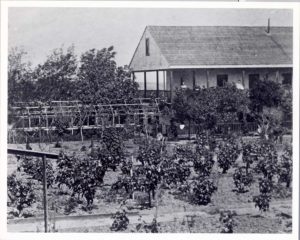 Southern California had experienced devastating floods and droughts in the 1860s. Temple was ready to retire, and he sold the property to the Bixbys for their sheep ranch. One of the first orders of business was to drill a new well and add a windmill to pump water into a raised water tower. With water available, the grounds were once again receiving irrigation.
Southern California had experienced devastating floods and droughts in the 1860s. Temple was ready to retire, and he sold the property to the Bixbys for their sheep ranch. One of the first orders of business was to drill a new well and add a windmill to pump water into a raised water tower. With water available, the grounds were once again receiving irrigation.
Unlike with Temple, this was the Bixbys’ home, and the garden provided sustenance as well as retreats for relaxation and play. The children used the summerhouse to store their croquet set.
The two Moreton Bay Fig trees added by the Jotham and Margaret Bixby are the only surviving plants documented from this era. They have grown together and today dominate the backyard.
The Tenant Era: 1890-1929
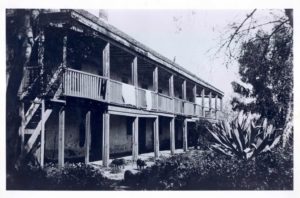 As sheep ranching gave way to land development, the Bixbys moved to town and let the adobe house to tenants.
As sheep ranching gave way to land development, the Bixbys moved to town and let the adobe house to tenants.
The garden use changed, and row crops replaced ornamental plants. The fence now served as a corral, keeping livestock in rather than protecting the garden from their grazing.
Llewellyn and Avis Bixby: 1929-1955
The memory of what the property’s former grandeur motivated Llewellyn Bixby to purchase the house and remaining property from the Jotham Bixby Company. He then set about restoring not only the adobe house but the gardens as well.
Noted landscape architect Ralph D. Cornell designed the 4.74-acre estate garden for the site. Key to the vision was preservation of as many of the existing garden features as possible.
Cornell integrated several of the existing trees, the water tower and even a try pot from Temple’s cattle ranch. A paved drive made accessing the hill easier and changed the traffic flow for both guests and family. Guests parked their cars in the forecourt, where they entered the backyard to gain access to the house. The backyard now featured a vast lawn and secondary orchard, along with a rose garden, cutting garden, and wisteria arbor.
In the other direction, wrapping around the drive to the garage, he installed a buffer zone of California native and exotic plants to soften the view of the developing cities beyond. This led to the servant’s wing and service yard. Once at the main entrance, the inner courtyard became an intimate garden complete with a terrace and covered verandas that extended the family’s living space. A small pond with a bronze toad served as a focal point.

